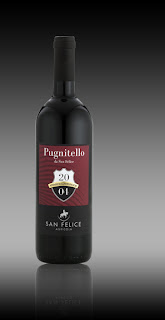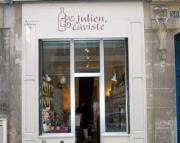
Why I don’t write tasting notes
I don’t propose to write tasting notes in this blog a) because I am not able (my palate is not good enough), b) I don’t find tasting notes helpful in any case and c) because the language of tasting notes has become very ritualised and ends up meaning little and evoking less;
Intense plums and cherrieswith creamy smoky vanilla on palate
Sweet dark morello cherries and rich juicy fruits
Ripe raspberry and plum fruit with lots of creamy oak
Minerally, ripe, attractively soft berry fruit with subtle oak influence
(four tasting notes from recent The Guardian/Observer wine foldies)
On the other hand, it is better to avoid the kind of pretentiousness satirised by Thurber;
“It’s a naive domestic burgundy without any breeding, but I think you'll be amused by its presumption.”
or the rampant word play of James Joyce describing a Fendant de Sion;
“a rhubarbarous moundarin yellagreen funkleblue windigut diodying applejack”
He also referred to this as ‘the Archduchess because, while he thought it looked like piss when he held it up to the light, it indubitably looked like aristocratic piss’ (Anthony Cronin; ‘Samuel Beckett. The last Modernist’).
What we drank this summer
2 weeks in Toscana were surprisingly interesting given the ubiquity of Tuscan wines based on Sangiovese. The regular tenants of holiday villas on the La Foce estate (between Chianciano terme and Montepulciano) drink Brunellos and Nobile di Montepulciano (sometimes chilled) costing €20 - €30 or more, I would guess. Of course they are very delicious.
There are countless Enoteche in Montepulciano most of which are obviously owned by growers of who push a small selection of Vino Nobile but there is at least two very serious merchants who are also very knowledgeable. At ******** I bought a bottle of Pugnitello San Felice (2004).

For once the back label was a riveting read;
“Pugnitello is the concrete result of 20 years of research, carried out in close collaboration with the University of Florence in the experimental vineyards of San Felice. Pugnitello is an ancient Tuscan variety whose name derives from the shape of its cluster, which looks like a small fist (pugno). 12,800 bottles made.”
The wine was ‘himmlich…..herrlich’ (to quote ‘Die Zauberfloete’). It has a character and is luscious and rich. The alcohol content of the 2004 vintage was a reasonable 13.5%. A great find. Very well worth seeking out (around €30).
There were two other happy discoveries in Italy; one was Italian Supermarkets. The wine selections even in humble supermarkets such as Conad and COOP are extremely interesting because I reckon it is impossible to tailor the stock to every DOC area typically drunk by local consumers so in southern Tuscany you can buy interesting wines such as Bonarda Otrepo Pavese, Falanghina, Raboso, Inzolia/Insolia/Ansonica, lashings of Nero d’Avola should you wish, but also Verduzzo which I have never seen outside the Veneto, Gaglioppo and many more.
The other discovery was a Canaiolo in purezza which I found at the COOP. Later attempts to find other examples demonstrated how difficult this is. It was absolutely marvellous. On reading up on this lesser known Chianti grape I discovered that before phylloxera, it was the dominant ingredient of Chianti. Only because it is a poor grafter has it been demoted to providing small dollops to the blend. The bottle we enjoyed cost a little over €13.
So Toscana is not only Sangiovese. Indeed the September edition of ‘Decanter’ had an Alicante (presumably Alicante Bouschet) from the Maremma which I tried to find without success and in my further reading on Pugnitello I learned that Toscana has over 200 native grape varieties (about 10% of Italy’s native grapes) so hopefully the University of Florence and San Felice will ressurect others.
A less happy experience was an attempt to like Cilegiolo. The one I bought at Enoteca Faraone in Livorno was only a little less difficult to drink than the one I tasted at Green and Blue in London, so I’m afraid Cilegiolo joins my list of ‘Worst Grapes’. I’ve always wondered what is meant by ‘easy drinking’; now I know what difficult drinking is!
Finally, Enoteca Vanni in Lucca!

I have been going there for years but had never ventured downstairs to the cellars. There they have EVERYTHING! I have never seen such a huge selection of Italian wines and foreign ones too. Strange because whenever I have asked for something they didn’t display upstairs, I don’t remember them saying they might have had it downstairs. Indeed I was looking for something to give a friend as a birthday present and asked for Palari’s ‘Santa Nè’. The Lady who was minding the shop had never heard of it, but I found it on my walk through the cellars – taken to kill time before her son came to relieve her (‘lui sa tutto’). In fact when I told him I had found the wine he looked rather blank. Perhaps one would, given the huge selection.
Headline in ‘IL TIRRENO’, 20.8.08Niente vino all’ospedaleVietate le bevande alcoliche in mense e spacci dell’Asl
LUCCA. Bandito l’alcol dai bar e dalle mense dell’ospedale. Lo ha deciso la Direzione dell’Asl nell’ambito della prevenzione dell’abuso alcolico. Non si potranno piu vendere o somministrare bevande alcoliche di nessun genere, dal vino alla birra a quelle con gradazioni assai piu elevate, I cosiddetti superalcolici, Quella diretta da Oreste Tavianti e una delle prime Asl in Italia a introdurre una novita di questo tipo…
The fact that this is the first time anyone has felt the need to ban alcohol from hospitals in Italy is surely a true homage to the Italians’ sensible culture concerning drink.





